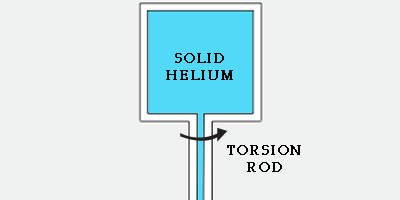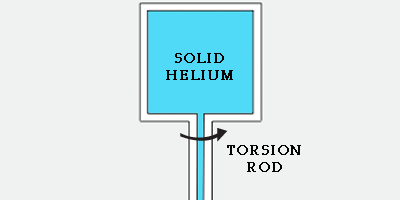Solid Thinking on Supersolidity
A classic experiment for observing the superfluid transition in liquid helium involves measuring the resonance frequency of a torsional oscillator immersed in the liquid. Just below the superfluid transition temperature at around kelvin, the oscillator frequency increases slightly. This increase signals a drop in the moment of inertia of the system, as a fraction of the liquid (the superfluid fraction) decouples from the rest, reducing the drag on the oscillator.
In 2004, Eon-Seong Kim and Moses Chan at Pennsylvania State University reported a similar increase in frequency when they performed the torsional oscillator experiment on solid helium confined within the pores of Vycor glass. The sensational conclusion from their results was that a fraction of the solid helium was flowing without dissipation—a supersolid.
However, a growing body of literature now suggests that there may be a more mundane interpretation of Kim and Chan’s experiments. In a theoretical paper in Physical Review B, Humphrey Maris of Brown University in Rhode Island explains that a frequency increase, comparable to that seen in many experiments, could be due to a change in the shear modulus of the helium that is coupled, as if by a spring, to the apparatus. By Occam’s razor, it seems supersolidity need not be invoked to explain the observed “nonclassical rotational inertia.”
Maris’s analysis may guide the design of future experiments. For example, if the coupling of the solid helium to the apparatus is truly dominant, and depends on the material properties of the oscillator, then similarly shaped oscillators made of different materials should yield different frequency shifts. – Matthew Eager





